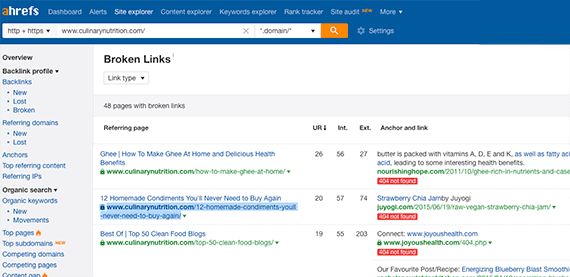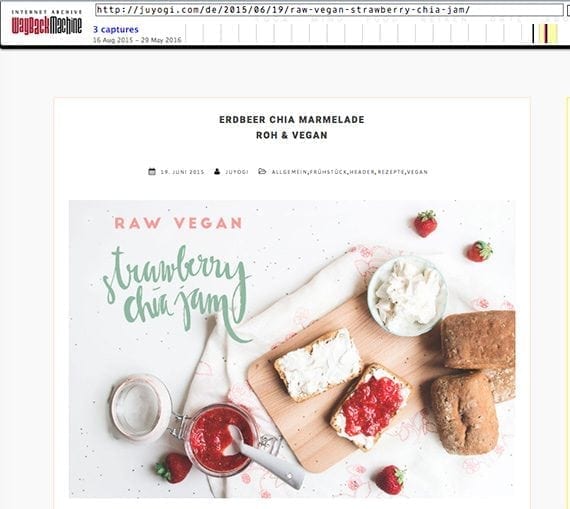A popular link-building tactic is also an excellent way to identify content marketing topics. When combined, broken link building and content marketing could generate traffic for your site and provide a way to engage visitors.
While broken link building and content marketing have similar goals, at some businesses, particularly mid-market and enterprise level companies, the folks working on search engine optimization and the folks developing content are on separate teams with different departmental goals.
Bringing these two groups together and using broken link building to spark content marketing campaigns may improve results for both of these marketing techniques.
Broken Link Building
SEO broken link building is a three-step outreach technique.
First, research websites relevant to the industry and customers your business serves, identifying broken links, which are HTML links aimed at pages that are no longer available.
Second, your business would develop useful content that replaces, if you will, the content promised through the broken link.
Third, you would contact the influential website’s owner or manager, offering your new content as a replacement.
Here’s a summary.
“Sites change, and pages disappear all the time,” said SEO expert Greg Gifford in lesson five of SEMrush Academy’s “SEO Fundamentals Course.” “With this strategy, you’re looking for high quality, authoritative pages that have links pointing to pages that no longer exist — that’s called a broken link. Then, you go and create a new piece of content that answers the same question or need. You reach out to the website and let them know that the link on such and such a page is broken, but you’ve got a brand new page that would work instead… and boom. Kickass quality link.”
Content Marketing
Content marketing, on the other hand, is the act of creating, publishing, and distributing content such as articles, videos, podcasts, whitepapers, infographics, and similar with the goals of attracting, engaging, and retaining potential customers.
Content marketers want to create something of value, something that is useful, informative, or entertaining. It also tends to have three general steps.
First, identify topics that will help or engage potential customers in some way.
Second, create good content around the topic, publishing it on a blog, on social media, or similar.
Three, distribute or promote the content.
Find Broken Links
The three steps of broken link building and the three steps of content marketing are noticeably similar. A content marketer has dozens of methods for generating content topics. Researching relevant websites to identify broken links could be one of them. Consider an example of how to find broken links on an influential website.
Say we own an online kitchen supply store. We make our living selling cookware, utensils, and kitchen gadgets. As part of our marketing strategy, we publish useful cooking and health-related articles on our store blog.
We’ve done some research, and we know that the Academy of Culinary Nutrition is an important website for our industry.
There are tools we could use to find broken links on the Academy’s website. Some of the best include Ahrefs, PowerMapper’s SortSite, SEMrush, Screaming Frog, and the Dead Link Checker, among many others. We want to choose one of these tools to help us locate broken links.
Using Ahrefs we’re able to identify 48 pages on the Academy’s website that have broken, outbound links.

The Ahrefs tool identifies 48 broken links.
—
Among these was a link aimed at a strawberry chia jam recipe.

The third link in this list is the broken link. If we can create a great strawberry chia jam recipe of our own, we might be able to get this link.
Copy the broken URL link and open it in a new browser tab as a test. In this case, the page is, in fact, returning a 404 error. Thus we’ve confirmed that we have a broken link opportunity.
The next stop is Internet Archive’s Wayback Machine. The Wayback Machine stores copies of old web pages. It had a single copy of the jam recipe that the Academy originally linked to.

Internet Archive’s Wayback Machine has a copy of the web page that we can use as a reference.
We know that the original post had several compelling photographs and an easy-to-follow recipe. It is not surprising that the Academy wanted to link to it.
Create New Content
Our goal is to not only replace the content that a publisher, such as the Academy of Culinary Nutrition, had previously linked to, but also improve it.
In the example above, we identified an opportunity to write a strawberry chia jam recipe article. But we want to do it better to provide an even better page for the Academy to link to.
Anytime you use broken link building to generate content ideas, always aim to improve on the original. You want to provide real value.
Contact the Publisher
Value is important. It will make the final step in broken link building a lot easier. And this last step is when you reach out to a publisher and offer her the new content to fix the broken link.
In our example, we would contact the Academy with an email.
Hello. I hope this note finds you well. I found a broken link in your “12 Homemade Condiments You’ll Never Need to Buy Again” article, at:
https://www.culinarynutrition.com/12-homemade-condiments-youll-never-need-to-buy-again/.
In the section on jams, the link to Juyogi’s strawberry chia jam now returns a 404 error. I thought you would like to know.
For your consideration, I have a delicious strawberry chia jam recipe to use as a substitute. You can find it here [our link goes here].
So that’s it. We just used broken link building to discover a topic for our next content marketing post and, perhaps, obtain a fresh in-bound link. Now we can use our normal content marketing techniques to continue promoting the post. We have SEO and content marketing working together.
This content was originally published here.